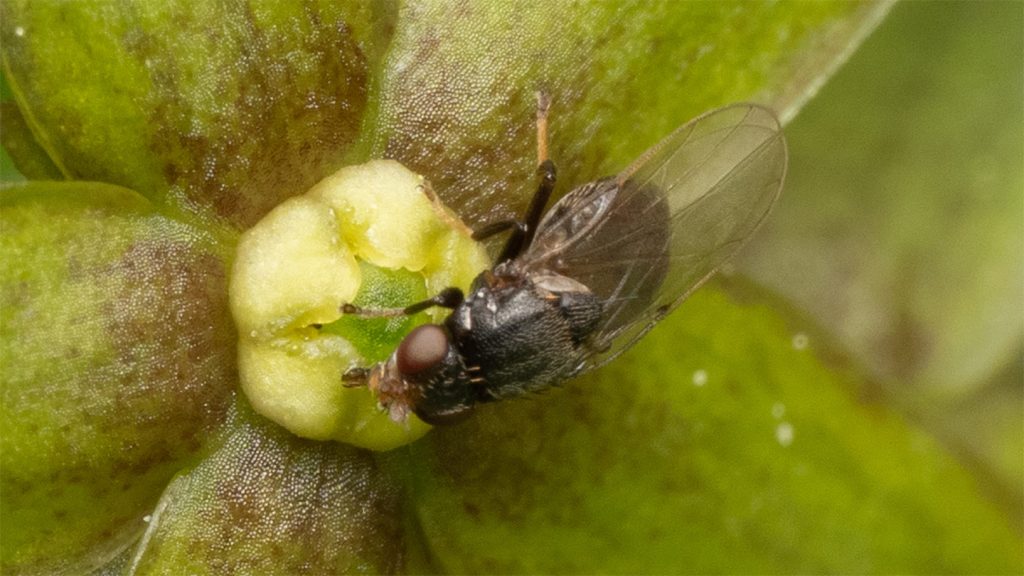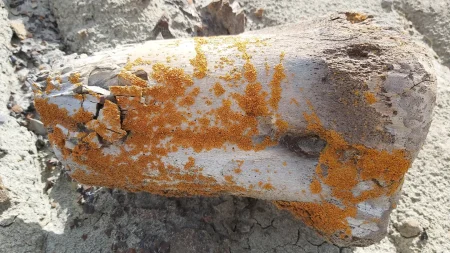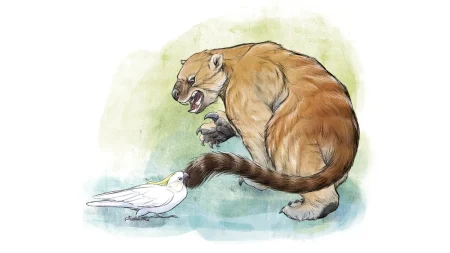Japanese Flower’s Deadly Deception: A Floral Tale of Murder and Pollination
In the lush botanical gardens of Tokyo, a seemingly ordinary flower harbors an extraordinary secret. Vincetoxicum nakaianum, a recently identified species of Japanese dogsbane, has evolved one of nature’s most macabre deceptions: it produces a scent identical to that of injured ants, luring unsuspecting flies to serve as its pollinators. This remarkable discovery, published in the October 20th issue of Current Biology, offers a fascinating glimpse into the complex and sometimes grisly relationships between plants and insects.
The detective work began when botanist Ko Mochizuki of the University of Tokyo noticed something peculiar – clouds of grass flies hovering around these unassuming flowers. This observation struck him as profoundly unusual because grass flies aren’t typical flower visitors; they’re scavengers that feed on injured insects rather than nectar. “Grass flies swarming around a flower is really weird and rare scenery in nature,” Mochizuki notes. The incongruity prompted a compelling question: what could possibly attract these carnivorous insects to flowers? The answer would reveal one of nature’s most ingenious deceptions.
Through meticulous chemical analysis, Mochizuki uncovered the flower’s dark secret – its fragrance is a perfect chemical forgery of the distress signals released by wounded ants. This morbid mimicry isn’t completely unprecedented in the plant kingdom; a few other species employ similar tactics, like the parachute plant (Ceropegia sandersonii) which smells like injured honeybees, and smearwort (Aristolochia rotunda) which mimics the odor of damaged plant bugs. However, V. nakaianum’s ant-mimic strategy represents a newly documented example of this evolutionary trickery. To confirm his hypothesis, Mochizuki conducted a series of elegant experiments, including creating a synthetic recreation of the ant-distress volatiles, which indeed attracted the flies. Perhaps most convincingly, flies in a maze successfully located spider-killed ants by scent alone, proving their ability to track such odors and explaining why the flower’s deception works so effectively.
What makes V. nakaianum particularly intriguing is its ordinary appearance. Unlike other plants that employ similar deceptive strategies, which often feature elaborate trap-like structures to capture and later release their pollinating flies, this Japanese dogsbane looks remarkably conventional. “Strange mimicry is not restricted to flowers with very strange morphology,” Mochizuki observes. This suggests that chemical mimicry alone can be sufficient for successful deception, challenging previous assumptions about the necessity of specialized physical structures in such pollination strategies. The discovery opens new questions about how frequently this phenomenon might occur in other seemingly ordinary-looking plants that have not yet been studied in detail.
The evolutionary pathway that led to this deadly deception remains a compelling mystery. Mochizuki is now investigating related plant species to understand how “such weird mimicry systems” develop “during the course of evolution.” The precision of the chemical mimicry is astonishing – not just a general approximation of injured insect scent, but specifically the exact chemical signature of wounded ants. This level of specificity suggests a long co-evolutionary history between the plant, the flies, and potentially even the ants, though much remains to be discovered about these relationships. The success of this strategy also reveals how powerfully chemical signals can drive insect behavior, even overriding their typical patterns of foraging and food selection.
Cornell University biologist Robert Raguso beautifully contextualizes this discovery through the German concept of umwelt – the unique sensory reality experienced by different organisms. “We can barely imagine the sensory realities perceived by other organisms with whom we share the biosphere,” he reflects. Indeed, this research offers us a momentary glimpse into the perceptual world of these insects, where chemical signals create powerful illusions that shape their behavior. Raguso captures the wonder of this phenomenon perfectly: “A small, inconspicuous flower like this is nevertheless capable of conjuring the chemical essence of wounded ants…. It almost seems like a magic trick.” And like the best magic tricks, this floral deception happens right before our eyes, yet remained hidden until careful observation and scientific inquiry revealed its secrets – a reminder of how much remains to be discovered about the subtle and sophisticated ways that plants have evolved to survive and reproduce in a world of endless competition and cooperation.














